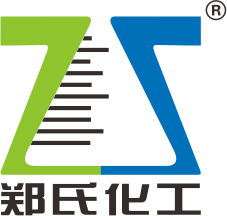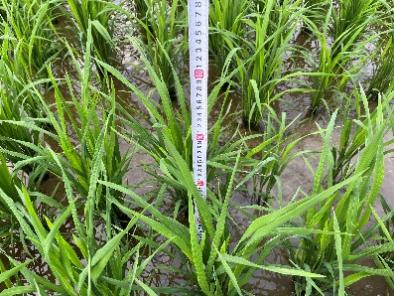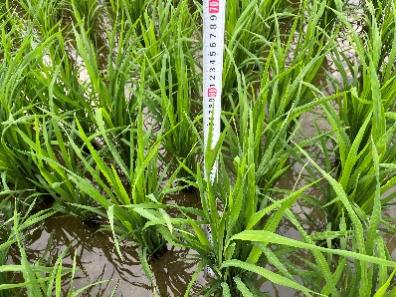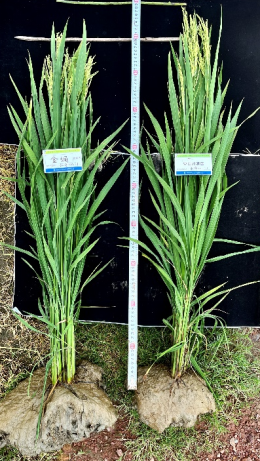Prohexadione calcium Effect of control overgrowth in JIangxi
Time:
2022-10-30
Rice is one of the three major crops in the world and is the main food crop in China. In recent years, Jiangxi and other places have suffered heavy rain and wind during the rice harvest season, resulting in a large area of rice lodging and yield reduction. At the same time it increase the difficulty of harvesting and costs.
In traditional, we use a lot of paclobutrazol to control and it caused a large amount of pesticide residues in paddy fields and affect the next crop. Prohexadione calcium is a new type of control agent, which has the advantages of good control effect, short residual time and environmental friendly in rice control. In order to further optimize the formula and field application demonstration, ZS-CHEM Crop-Tech Department carried out a rice control experiment in Jiujiang City, Jiangxi Province in June 2022.
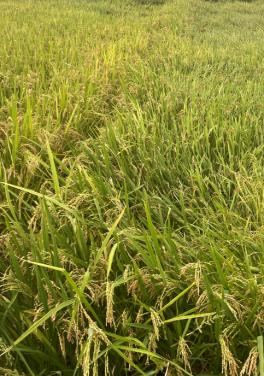
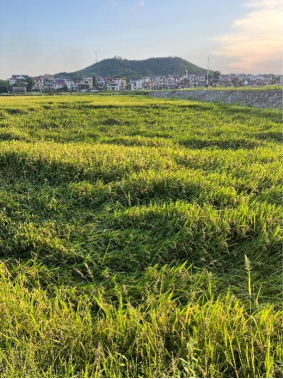
Prohexadione calcium Effect of control overgrowth in JIangxi
Test time and place: June 6, 2022, Yongxiu County, Jiujiang City
Crop variety: Liangyou 302
Test agent: 15 % Prohexadione calcium
Test method: Foliar spraying at the tillering stage of rice. The plant height of each treatment was randomly measured and five points were sampled at harvest to measure yield.
Test result: The plant height of rice treated with ZS-CHEM scheme was lower than that of the control, and the 1000-grain weight and yield were increased. Twenty-six days after treatment, the plant height was 91.13cm and 89.8cm, the 1000-grain weight was 29.35g and 29.48g, the wet grain yield was 816.41kg and 852.97kg. The control plant height was 98.46cm, the 1000-grain weight was 28.69g, and the wet grain yield was 722.37kg. Although there was little difference in plant height between ZS-CHEM scheme and the control plant, the root system of rice increased significantly after the use of ZS-CHEM scheme, which increased the lodging resistance of rice. It was also concluded from the yield measurement that the use of ZS-CHEM scheme could increase the yield of rice and achieve the purpose of increasing the income.
Table 1 Comparison of Rice Plant Height of Each Treatment
|
Treatment |
ZS-CHEM scheme 1 |
ZS-CHEM scheme 2 |
control |
|
Plant Height 0 Days After Treatment (cm) |
58.8±2.25c |
59.86±0.98bc |
63.00±1.90a |
|
Plant Height 7 Days After Treatment (cm) |
69.53±1.74c |
67.33±1.36c |
75.60±0.80a |
|
Plant Height 12 Days After Treatment (cm) |
67.06±2.36c |
69.13±1.10bc |
79.20±1.56a |
|
Plant Height 26 Days After Treatment (cm) |
91.13±1.1c |
89.8±1.11c |
98.46±1.00a |
Table 2 Comparison of 1000-grain weight and yield of each treatment
|
Treatment |
ZS-CHEM scheme 1 |
ZS-CHEM scheme 2 |
control |
|
1000-grain weight (g) |
29.35±0.69a |
29.48±0.23a |
28.69±0.37b |
|
yield/667m2 (wet) (kg) |
816.41±50.54ab |
852.97±17.49a |
722.37±20.14c |
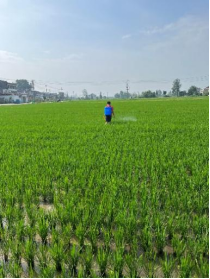
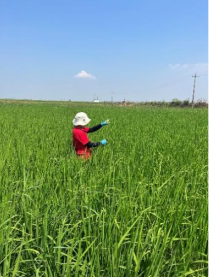
Treatment Measuring plant height
|
|
|
|
|
ZS-CHEM scheme 1 on the day of Treatment |
ZS-CHEM scheme 2 on the day of Treatment |
Control on the day of Treatment |
|
|
|
||
|
12D after treatment ZS-CHEM scheme |
12D after treatment Control |
26D after treatment ZS-CHEM scheme |
26D after treatment Control |
15 % Prohexadione calcium on rice control needs to pay attention to the time and dosage. It is best to spray at the peak tillering stage of rice, Avoid being too early and too late. The dosage should be strictly in accordance with the recommended dosage to avoid adverse effects such as drug damage. The recommended dosage of the preparation is 450-600g/ha. At the same time, after Elongation stage, rice grain filling requires a lot of fertilizer, so foliar fertilizer and reasonable field management are necessary to obtain higher yields and benefits. The dosage and effect of different regions and varieties are quite different, so small-scale verification should be carried out before popularization and application.
